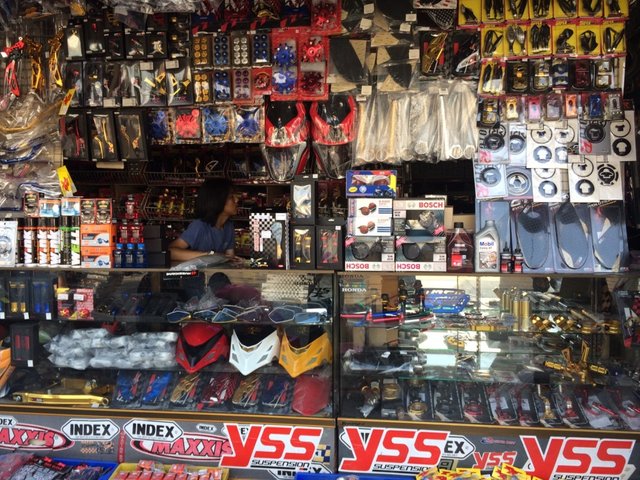Discover High Quality Moto Parts NZ for All Your Motorcycle Demands
Discover High Quality Moto Parts NZ for All Your Motorcycle Demands
Blog Article
Understanding the Essential Components of a Motorbike: A Comprehensive Guide for Lovers
For motorcycle enthusiasts looking to elevate their riding experience and ensure their bikes run efficiently, understanding the essential elements of a motorbike is vital. Each element, from the engine's detailed operations to the crucial function of the braking mechanisms, not only affects efficiency yet likewise security and comfort.
Engine Parts

The camshaft plays an essential duty in managing the timing of the engine's shutoffs, guaranteeing the specific opening and closing essential for efficient fuel and air consumption, as well as exhaust expulsion. This timing is crucial to keeping ideal engine efficiency and efficiency. In addition, the carburetor or fuel shot system, depending upon the bike design, is accountable for mixing air with gas in the right ratio for combustion.
The cooling system, either air or liquid-based, works to keep the engine's temperature within functional restrictions, preventing overheating and making certain durability - mx parts nz. Each part, meticulously developed and integrated, adds to the smooth operation of the engine, specifying the motorbike's power outcome and overall performance
Transmission System
Indispensable to the bike's functionality, the transmission system guarantees efficient power transfer from the engine to the wheels. This system makes up numerous critical components, consisting of the clutch, gearbox, and final drive, each playing a vital duty in translating the engine's power into motion. The clutch, normally operated by a hand bar, serves to disengage the engine and engage from the transmission, permitting for smooth gear changes and controlled acceleration.
The gearbox, usually described as the transmission correct, has a collection of gears that riders can manually shift with to adjust the bike's speed and torque output. These gears are set up in a sequence that allows the motorcycle to increase efficiently and preserve optimum engine performance across numerous speeds. A lot of bikes utilize a sequential transmission, needing the motorcyclist to move gears in an established order.
Braking Systems
While comprehending the transmission system is vital to using a motorcycle's power, similarly essential is the capacity to manage and stop that power properly, which is where stopping mechanisms enter into play. Brakes are crucial for security and efficiency, supplying the motorcyclist with the required control to navigate various surfaces and conditions. Generally, bikes include two kinds of stopping systems: disc brakes and drum brakes.
Disc brakes are a lot more widespread in contemporary motorcycles because of their superior efficiency. They contain a brake disc, caliper, and pads. When turned on, the caliper squeezes the brake pads against the rotating disc, converting kinetic power into warmth, thus slowing the wheel. This system supplies far better heat dissipation, constant efficiency, and boosted quiting power, especially in damp problems.
Conversely, drum brakes, dual sport motorcycle jacket though less typical, are still located in some motorbikes. They function by pushing brake shoes versus the inner surface area of a drum attached to the wheel. While normally much less effective in warmth dissipation and quiting power, drum brakes are less complex and much more cost-effective.
Comprehending these braking systems' nuances enables bikers to maintain their motorcycles correctly and appreciate the engineering that makes sure secure and reliable quiting.
Suspension and Guiding
Suspension and guiding systems are important elements that considerably influence a motorbike's handling and trip convenience. The shock absorber, including forks at the front and shock absorbers at the back, soaks up road irregularities, improving stability and control. Front forks, inverted or generally telescopic, compress and rebound to alleviate effects, while back shock absorbers keep tire call with the roadway, important for grip and security.
Guiding, focused around the handlebars, links the biker to the motorcycle's directional control. The guiding head bearings ensure smooth operation, permitting precise maneuverability. Correct positioning and maintenance of these bearings are critical for predictable steering reaction and reducing biker exhaustion.
The suspension's adjustability is an additional vital facet; preload, damping, and rebound setups enable personalization to suit different riding conditions and designs. This versatility is necessary for optimizing efficiency, whether browsing metropolitan streets see this site or tackling tough routes. Innovations like electronic suspension systems supply real-time modifications, boosting trip high quality throughout diverse surfaces.

Electric Solutions
After ensuring a controlled and smooth ride with effective suspension and steering systems, interest turns to the electrical systems, a crucial element of modern-day motorcycles. These systems play a vital function not only in beginning the engine yet likewise in powering numerous elements that enhance the functionality and safety and security of the bike.
At the heart of a motorcycle's electrical system is the battery, which stores electric power necessary for beginning the engine and powering complementary systems - motorbike shop. The alternator or generator, combined with the rectifier-regulator, makes sure the battery remains billed while the motorbike is in operation, converting power right into electric power and preserving voltage levels
The ignition system, an additional essential element, is accountable for sparking the air-fuel mixture in the engine's cyndrical tubes. Modern motorcycles typically utilize a digital ignition system, supplying better performance and integrity contrasted to standard systems.
Lighting systems, consisting of headlights, tail lights, and signs, are also essential, guaranteeing exposure and security for the biker. Extra electronic elements such as sensing units, control units, and shows find out this here contribute to innovative attributes like fuel shot administration, anti-lock stopping systems (ABDOMINAL), and electronic dashboards, further enhancing the riding experience.
Verdict
A complete comprehension of a bike's essential elements, including the engine, transmission system, stopping mechanisms, suspension, guiding, and electric systems, is indispensable for enthusiasts intending to enhance convenience, efficiency, and safety and security. Proficiency of these elements enables for informed decisions concerning upkeep and upgrades, eventually boosting the riding experience. By incorporating this understanding, motorcyclists can guarantee their motorcycles operate at peak efficiency and reliability, thereby taking full advantage of both enjoyment and long life of their vehicles.
For motorcycle lovers looking to boost their riding experience and guarantee their bikes run smoothly, understanding the necessary parts of a motorcycle is paramount.Essential to the motorbike's capability, the transmission system guarantees effective power transfer from the engine to the wheels.While understanding the transmission system is key to harnessing a bike's power, similarly important is the capability to manage and stop that power effectively, which is where braking mechanisms come into play. Usually, motorbikes include 2 kinds of braking systems: disc brakes and drum brakes.
A detailed comprehension of a bike's essential components, including the engine, transmission system, braking mechanisms, suspension, steering, and electrical systems, is essential for enthusiasts intending to optimize safety and security, efficiency, and convenience.
Report this page